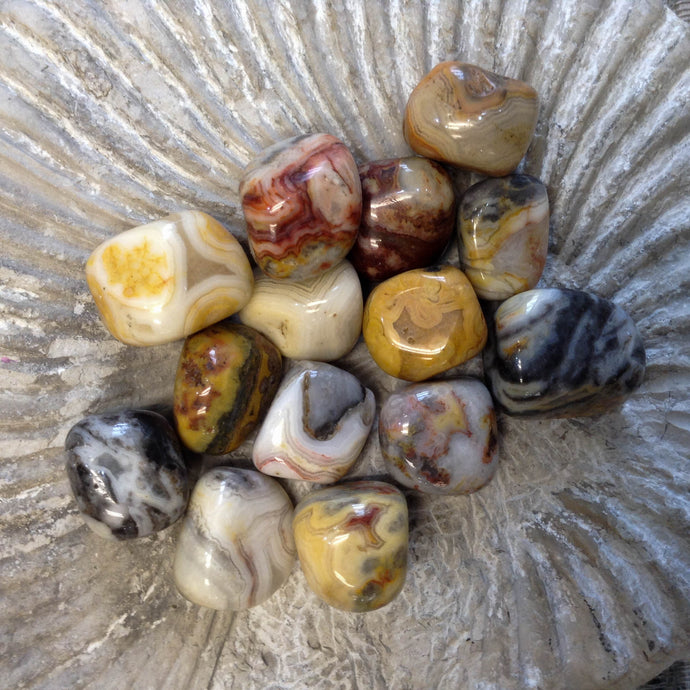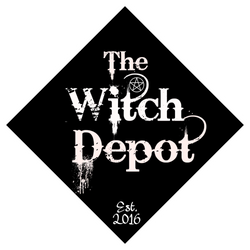
Crazy Lace Agate, Tumbled
Regular price
$0.50
$2.00
Sale
Crazy Lace Agate is called the Laughter Stone, or "Happy Lace." It is associated with sunny Mexican fiestas and dancing, and brings joy to those who wear it. [Eason, 305] It is not a stone of protection, but of support and encouragement, elevating thoughts and promoting optimism. Its graceful design, in random lacy patterns, creates a circular flow of energy, stimulating for the mind and attitude. [Mella, 70]
Crazy Lace Agate is a variety of banded Chalcedony, a mineral of the Quartz family. It is predominantly white, with layers of creamy browns, blacks and grays. Some may include layers of yellow ochre, gold, scarlet and red. Agate is sometimes called the earth rainbow because, in its various forms, the concentric bands in nature form nearly every color the earth can produce, including a colorless form.
Historically, Agate has been discovered with the artifacts of Neolithic people, and was used as healing amulets and ornamentation dating back to Babylon. Its medicinal uses continued through the ancient Greek and Egyptian civilizations, and spread throughout Africa and the Middle East into Russia. Agate sparked a world renowned stone cutting and polishing industry in Germany that flourished from the 15th to the 19th century, and exists today. [Simmons, 6][Mella, 67-68]
Metaphysically, Agate has a lower intensity and vibrates to a slower frequency than other stones, but is highly regarded as a stabilizing and strengthening influence. [Simmons, 6] The layered bands of microscopic quartz in Agate may appear delicate, they are actually very strong. Agate is excellent for balancing emotional, physical and intellectual energy, and in harmonizing Yin and Yang, the positive and negative forces of the universe. [Hall, 39]
Crazy Lace Agate is a variety of banded Chalcedony, a mineral of the Quartz family. It is predominantly white, with layers of creamy browns, blacks and grays. Some may include layers of yellow ochre, gold, scarlet and red. Agate is sometimes called the earth rainbow because, in its various forms, the concentric bands in nature form nearly every color the earth can produce, including a colorless form.
Historically, Agate has been discovered with the artifacts of Neolithic people, and was used as healing amulets and ornamentation dating back to Babylon. Its medicinal uses continued through the ancient Greek and Egyptian civilizations, and spread throughout Africa and the Middle East into Russia. Agate sparked a world renowned stone cutting and polishing industry in Germany that flourished from the 15th to the 19th century, and exists today. [Simmons, 6][Mella, 67-68]
Metaphysically, Agate has a lower intensity and vibrates to a slower frequency than other stones, but is highly regarded as a stabilizing and strengthening influence. [Simmons, 6] The layered bands of microscopic quartz in Agate may appear delicate, they are actually very strong. Agate is excellent for balancing emotional, physical and intellectual energy, and in harmonizing Yin and Yang, the positive and negative forces of the universe. [Hall, 39]
